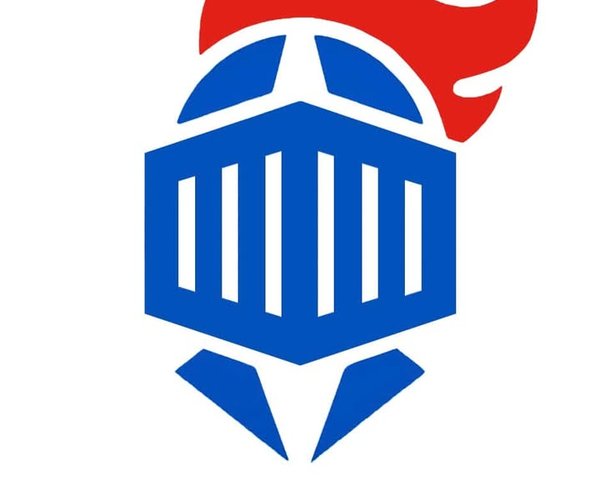STEVENS POINT — The Wisconsin Interscholastic Athletic Association Board of Control approved the most sweeping changes to high school football playoffs in more than 40 years.
The Board of Control voted Feb. 5 to replace the previous playoff qualifying system, which was based on teams’ conference records with playoff divisions determined after the playoff field was set, with a “matrix” system and additional changes before and after the playoff field is determined.
The WIAA’s Conference Realignment Task Force Thursday approved changes to two area football conferences for the 2026 season.
The task force approved moving New Glarus from the Southwest Wisconsin Conference to the Southwest Wisconsin Activities League, with Belleville moving from the SWAL to the Eastern Suburban Conference, making the football SWC and SWAL seven-team conferences.
New Glarus had sought the move because of travel times for non-varsity football games, which are played on Mondays.
To make up the WIAA-required seventh conference game, an SWC team will play a SWAL team each week starting with the third week of the 2026 season.
The task force originally paired the SWC with the Eastern Suburban Conference, but decided to move Belleville to the Eastern Suburban, giving it eight teams, and pair the SWC and SWAL for each conference team’s seventh conference game.
There will be no changes to the area’s two other conferences, the 11-player Six Rivers Conference and the eight-player Ridge & Valley Conference, in 2026, assuming teams don’t switch from 11-player to eight-player or new co-op teams aren’t formed.
The Wonewoc-Center/Weston eight-player co-op is breaking up, with Weston joining Ithaca in 11-player football, according to the conference realignment proposals. Ithaca/Weston is in the Scenic Bluffs Conference. Wonewoc-Center will have its own eight-player team, according to the WIAA directory.
The Board of Control will give statewide realignment its final vote March 11.
Starting this coming season, teams will be placed in the seven divisions based on enrollment before the season, with each division having 50 to 55 teams based on the current number of 11-player programs. Under the old system the 224-team playoff field was determined after the last game of the regular season, with teams placed in the seven divisions based on enrollment after the field was set.
Instead of conference record, the playoff field will be determined based on a points system. “Tier 1” points are based on wins over teams based on their division divided by the number of games played, with 3.5 points for Division 7 wins, 4 points for Division 6 wins, 4.5 points for Division 5 wins and 5 points for Division 4 wins
“Tier 2” points are based on a team’s defeated opponents’ Tier 1 points divided by their games played and then multiplied by 9, the total number of games in a season.
A team’s total points will be the sum of its Tier 1 and Tier 2 points. Teams will be ranked within their division based on their points. The top 32 teams in each of the seven divisions will make the playoffs.
The third change will go away from lowest vs. highest seed scheduling of the previous system to scheduling playoff games based on regions and “nearest expected travel.” Teams will be seeded one to eight by division, with the top four scoring teams getting number one seeds, the next four second seeds and so on to the eighth seeds.
Number one seeds will be assigned into one of four regions, with number two seeds assigned as likely sectional opponents for the number one seeds, and number three and four seeds assigned as likely Level 2 opponents for the number two and number one seeds, respectively.
Had the new system been used during the 2024 playoffs:
● In Division 7, Potosi/Cassville would have been a number one seed and would have faced eighth-seed Seneca/Wauzeka-Steuben in Level 1, followed by fifth-seed Kenosha Christian Life or fourth-seed Black Hawk/Warren. Despite its undefeated record, Potosi/Cassville was a third seed last season, and despite its 7-2 record Black Hawk/Warren was a sixth seed last season, with the Chieftains and Warriors facing each other in Level 1 after having played one week earlier to determine the Six Rivers Conference champion. Iowa-Grant would have been an eighth seed in both playoff systems, but the Panthers went to number-one-seed Bangor last fall, whereas the new system would have had IG going to number-one-seed Johnson Creek in a different bracket.
● In Division 6, Cuba City, which lost just one nonconference game last season, would have been a number one seed. The Cubans were a third seed last year and lost their Level 2 game at Lancaster despite having a better regular-season record and beating the Flying Arrows in the regular season.
● Lancaster would have been a Division 5 third seed instead of a Division 6 second seed.
● In Division 4, Platteville would have received a seventh seed and would have opened at second-seed West Salem. That was the Hillmen’s only playoff game last season, though Platteville was a third seed and West Salem a sixth seed.
● Richland Center, which got into the 2024 playoffs, would not have made the playoffs under the new system.
The new system, which was spearheaded by Madison Edgewood football coaches Jesse Norris and Andrew Lavoy based on the system used in Ohio since the early 1970s, got overwhelming support among coaches in a Wisconsin Football Coaches Association poll.
“I think the new change for the playoffs is going to be a good change for high school football in Wisconsin and that’s for many different reasons,” said Platteville coach Bryce Arneson. “I think the first reason is the transparency that there will be for coaches and teams to know where they are in playoff seeding and can see who they may be playing is nice. I think that will eliminate a lot of the issues that there were the last couple years of teams not being fairly placed for the playoffs, or being sent to areas that they shouldn’t be sent to.
“I think it will also be nice because those bubble teams will know at the start of the year what division they are in, so there won’t be any issues with that as well.”
“I think this is a big step in the right direction,” said Potosi/Cassville coach Mark Siegert, whose team got to state in 2024 despite having to play a ranked Six Rivers rival in the first and third rounds after and before a road trip that would not have taken place in the new system. “It creates transparency and concrete criteria for playoff qualifying and also seeding. Knowing where you stand during the course of the season among the teams in your predetermined division is going to be really nice.
“Not having to stay up in the wee hours of the morning and hope the computer system spits out a favorable seed was stressful and quite confusing. Another plus is basing the regional construction on travel distance and end of the year point accumulation, which may lead to some new match-ups earlier in the playoff.
“If there are problems along the way, as long as the WIAA and WFCA work together to continually improve the system as it moves forward this should be a positive change for high school football in Wisconsin.”
“I don’t know that it will change things all that much for us at IG,” said Iowa-Grant coach Hayden Link, whose team won its last regular-season game to make the 2024 playoffs. “We are still trying to figure ourselves out as a program.”
Because nonconference games will now affect getting into the playoffs, coaches may now rethink their nonconference scheduling given that teams get more points the larger the school they play.
“A concern I have is maybe filling our two non-conference games in the future,” said Siegert. “Since you get more points for playing larger division teams, as a D7 team that may become an issue at some point.”
“I have heard or seen some things that teams are now going to schedule teams at a lower level then them because they are going to want more points in their favor, but I am not with all of that,” said Arneson. “No matter what the factor points are and the benefits of playing a lower-level team, the Platteville Hillmen will always play good nonconference games because it will only help us in the long run. It will ensure that we are getting ourselves prepared for a good SWC conference season and will get us ready for a difficult postseason.”
WIAA football playoffs began in 1976 with 16 playoff qualifiers based on a qualification formula in four divisions based on average conference enrollment. A fifth division was added in 1978, and a sixth division in 1980, with the six divisions expanded to eight teams, all conference champions, per division in 1981. Divisions have been based on school enrollment instead of average conference enrollment since 1984.
Conference runners-up were added when the field was expanded in 1987. The field was expanded to 192 teams — teams with winning conference records and enough .500 teams to fill the field — in 1996. A seventh division was added in 2002, resulting in playoffs for teams with winning conference records and some number of teams with .500 or even 3-4 conference records.
One result of the old system is that teams on the borderline could have found themselves pushed up an enrollment division if smaller schools got in the playoffs on the last night of the season, or pushed down an enrollment division if larger schools got in the playoffs on the last night.
This year’s playoffs were controversial because of Potosi/Cassville and Ithaca, both undefeated teams, getting third seeds while teams with losses got higher seeds based on the previous system’s strength of schedule formula. An error in the WIAA office also meant that two teams that should have gotten into the playoffs did not.
In 2017 River Ridge got into the playoffs after the Wisconsin Sports Network pointed out an error in the playoff field that initially indicated the Timberwolves did not make the playoffs.
In 2022 the WIAA initially made a mistake in determining Benton/Scales Mound/Shullsburg’s division by forgetting to add enrollment of Scales Mound, Ill., one of the three schools that makes up the state’s only tri-op football team and the first two-state co-op in the state.
The WIAA changed from seeding meetings to determine bracket seedings to electronic seeding in 2022. Since then there have been controversies each year, including last season in which Potosi/Cassville and Ithaca, both of which were undefeated, were seeded lower than teams with worse records.
The Board of Control also approved doubling the eight-player football playoff field from 16 teams to 32. While Belmont did not make the playoffs in 2024 and would not have made the new playoffs, another Ridge & Valley Conference that did not make the playoffs would have under the new system, De Soto.





